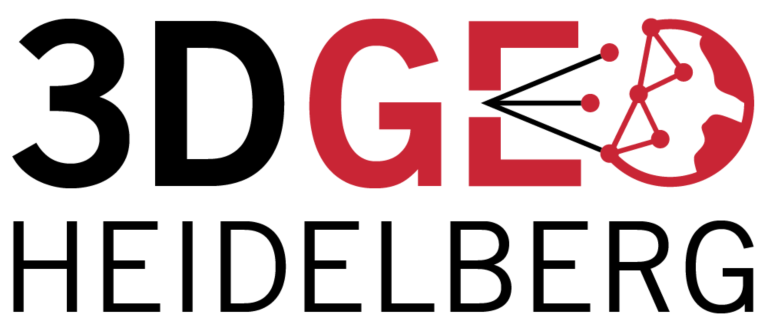Category: Publications
-
GIScience HD @AGIT 2016
Last week members of the GIScience Research Group were attending the AGIT – Symposium and Exhibit for applied Geoinformatics in Salzburg. Beside the interesting welcome note given by Anita Graser from AIT talking about the Open Data, Open Source and Open Services and the impact for Geospatial Information Systems, further keynotes and conference talks followed,…
-
Where the Streets Have Known Names – Linking Wikidata with OpenStreetMap
Street names provide important insights into the local culture, history, and politics of places. Linked open data provide a wealth of knowledge that can be associated with street names, enabling novel ways to explore cultural geographies. A recent paper presents a three-fold contribution. We present (1) a technique to establish a correspondence between street names…
-
Four contributions from GIScience Heidelberg at the ISPRS Congress in Prague
The LiDAR Research Group (LRG) of GIScience Heidelberg is contributing novel approaches for geological outcrop characterization, LiDAR simulation, tree classification as well as education in close-range sensing. You are kindly invited to visit our presentations at the ISPRS Congress 2016 in Prague. Furthermore our new HELIOS LiDAR Simulator will participate in the CATCON contest for…
-
Local-scale flood mapping on vegetated floodplains from radiometrically calibrated airborne LiDAR dat
Knowledge about the magnitude of localised flooding of riverine areas is crucial for appropriate land management and administration at regional and local levels. However, detection and delineation of localised flooding with remote sensing techniques are often hampered on floodplains by the presence of herbaceous vegetation. To address this problem, our very recent paper presents the…
-
A review of volunteered geographic information quality assessment methods
While Volunteered Geographic Information (VGI) is gaining more and more popularity and VGI datasets are being used in various projects, there are always concerns about the quality of them. During the past years several studies have been performed regarding VGI quality assessment by employing different methods/approaches. However, if one needs to evaluate the quality of…
-
PhD Defence Lucy Mburu on Geographic Criminal Profiling
This Friday – the hottest day of the year so far – Lucy Waruguru Mburu from the GIScience Research Group Heidelberg University successfully defended her PhD thesis on Criminal Geographic Profiling methods. Her thesis is entitled: “ A Framework for Prediciting Criminal Behavior and Area-Specific Crime Risk through Retrospective Analysis of Geographic Data“. Complemented by…
-
A Two-Tiered Approach to OSM Data collection for Novice Users & Personalizing Walkability
In addition to the two earlier presentations (No 1, No 2), today there are two additional presentations (No 3 & 4) by GIScience Heidelberg at AGILE 2016 conference in Helsinki: Rousell, A., Hahmann, S., Mobasheri, A. (2016): A Two-Tiered Approach to OSM Data collection for Novice Users. 19th AGILE Conference on Geographic Information Science. Helsinki,…
-
Clustering and Analyzing Air Pollution Data using Self-Organizing Maps
Today Enrico Steiger is presenting the following paper at AGILE 2016 conference Helsinki: Lee, M., Steiger, E. Zipf, A. (2016): Clustering and Analyzing Air Pollution Data using Self-Organizing Maps. 19th AGILE Conference on Geographic Information Science. Helsinki, Finnland. In Geographic Information Science the rise in the availability of spatial data paved ways for increased research…
-
Deriving incline values for street networks from voluntarily collected GPS traces
When producing optimal routes through an environment, considering the incline of surfaces can be of great benefit in a number of use cases. For instance, incline may be considered when computing the most energy-efficient routes for electric cars and bicycles. Likewise, pedestrians with restricted mobility (such as wheelchair users, parents with pushchairs, and the elderly)…
-
A conceptual model for quality assessment of VGI for the purpose of flood management
Volunteered Geographic Information (VGI) has emerged as a potential source of geographic information for different domains. Despite the many advantages associated with it, such information lacks of quality assurance, since it is provided by individuals with different motivations and backgrounds. In response to this, several methods have been proposed to assess the quality of volunteered…
-
Guided Classification System for Conceptual Overlapping Classes in OpenStreetMap
The increased development of Volunteered Geographic Information (VGI) and its potential role in GIScience studies raises questions about the resulting data quality. Several studies address VGI quality from various perspectives like completeness, positional accuracy, consistency, etc. They mostly have consensus on the heterogeneity of data quality. The problem may be due to the lack of…
-
Results on PsychoGeography published
Recently some more publications have been accepted or have been published online that present some further results from our joint project on Psychogeography together with our partners from ZI Mannheim and KIT: In particular the following overview paper about the project is now available as free pdf online: Reichert, M., Törnros, T., Hoell, A., Dorn,…


